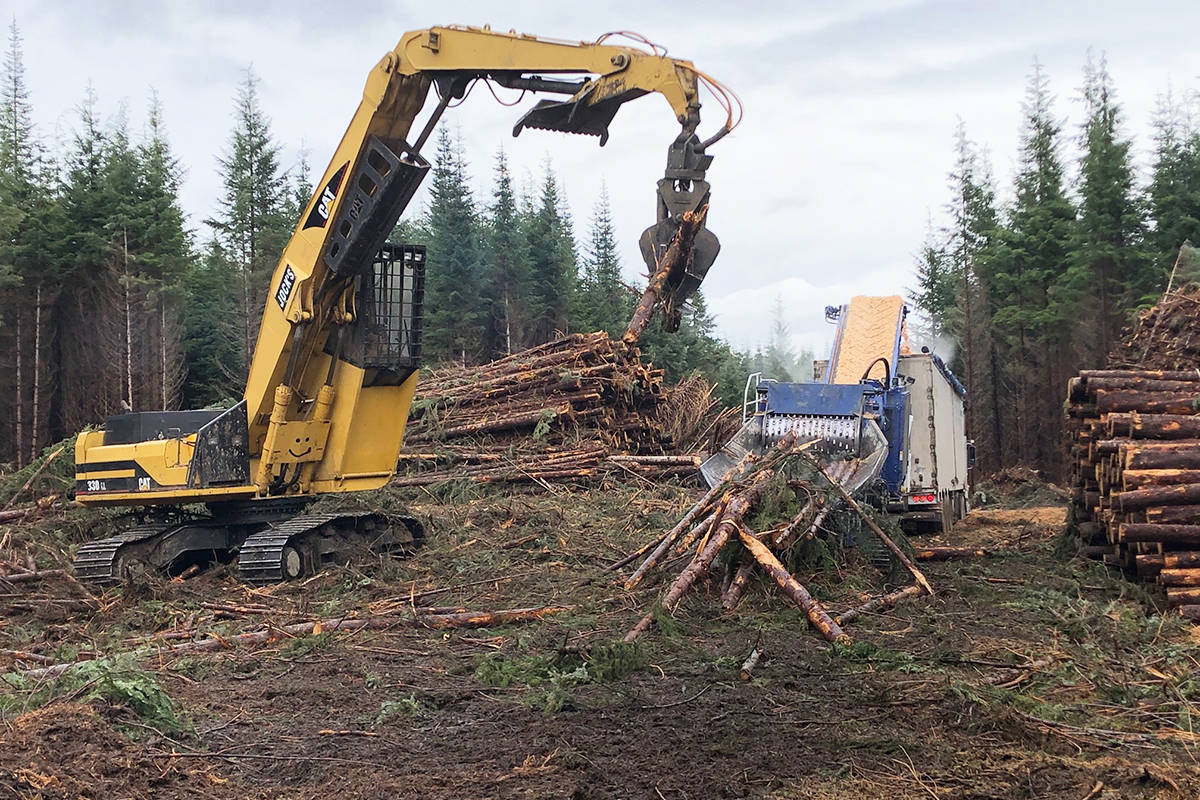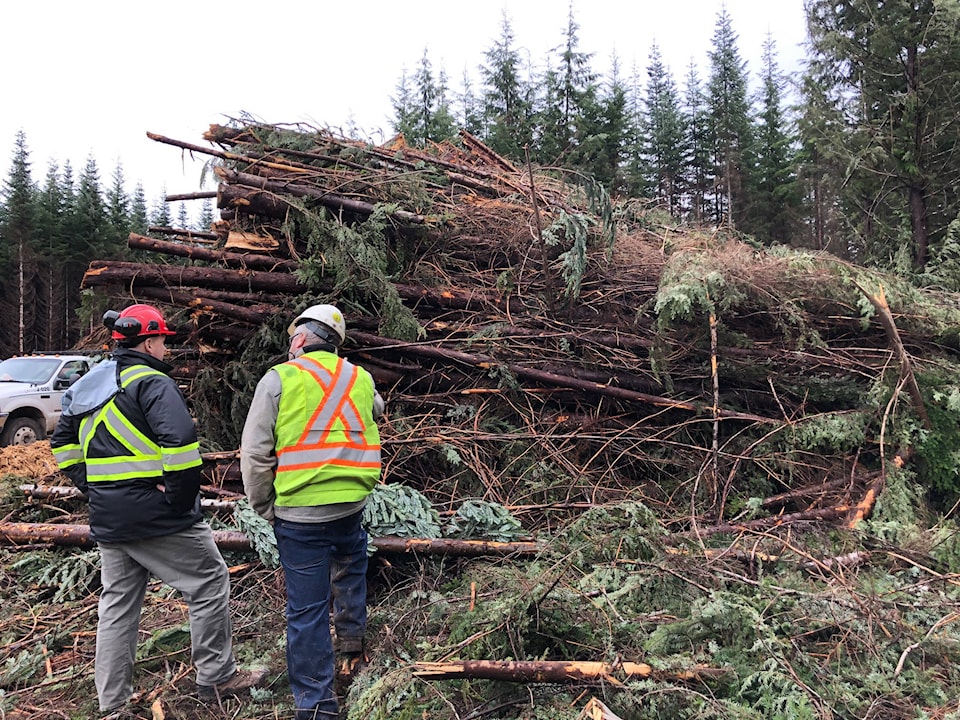A pilot project to thin out an overdense, second-growth forest site south of Terrace could result in economic and environmental benefits, provided the experience and results can be applied elsewhere in the area.
Originally logged more than 40 years ago for Eurocan, a company which once played a dominant role in the regional forest economy through a sawmill and a pulp and paper plant in Kitimat, the location was left to regenerate naturally.
But that meant the trees grew too close together, reducing their ultimate sawlog potential and severely limiting plant growth and space on the forest floor that could be attractive wildlife habitat.
The location, in close proximity to the Wedeene Forest Service Road, is within Tree Farm Licence 41, held by Skeena Sawmills, leading the company to apply to a provincially-financed agency for a grant to thin out the location.
Using a $370,000 grant from the Forest Enhancement Society of B.C., a project containing a number of objectives was drawn up, says Whitney Lukuku, a Terrace-based forester hired by Skeena Sawmills.
READ MORE: Terrace Community Forests moves forward on forest-thinning project
The prime objective was to reduce the number of trees per hectare from the average 3,874 per hectare at the site by 75 per cent to 900 trees, considered the ideal number.
“Fewer trees mean they will put on more girth, thereby producing robust logs as opposed to small-pole size ones,” Lukuku noted.
The thinning that was done met two other objectives — Skeena Sawmills was able to take smaller-size logs for its mill and its sister operation, next door newly-opened Skeena Bio-Energy was the beneficiary of other material that was chipped for its pellet operation.
Skeena Sawmills forester Tim Moser said the company is so far pleased with the pilot project.
“Part of the reason we did this is that the trees weren’t simply large enough. What we’re looking for is more value,” he said of the expectation is that the trees that were left will now have more room to grow.
Of immediate benefit were the 46 truckloads of sawlogs taken to Skeena Sawmills and 69 trucks of chips taken to Skeena Bio-Energy.
The alternative was to leave the fibre behind or burn it, neither option being favourable, Moser noted.
The chips were produced on location with waste being fed directly into a chipper and then into a waiting truck, reducing the amount of dirt and mud that would reduce their usefulness for pellets.
“They call it ‘white chips,” said Moser of what was produced. “It was a good quality to help the pellet plant with mixing for a good quality pellet.”
READ MORE: Is this the world’s cleanest pellet plant?
Moser said a suggestion by Ian Black from Jock’s Excavating, the company that did the thinning and chipping work, to use waste as the base for the haul road from the site proved particularly beneficial.
“The roadbed held up very well, not at all muddy like roads at other locations,” he said, adding the waste base avoided disturbing the underlying soil.
The task of thinning out the overdense site was accomplished using a small and highly-maneuverable feller-buncher machine.
It cut a series of loop-like trails at the location so trees could be hauled to the waiting chipper in addition to its thinning work.
Aside from thinning, providing sawlogs and chips for pellets, Lukuku and Moser are also hoping to meet a fourth objective — creating habitat to attract wildlife such as goshawks and bats.
Moser said removing the dense forest cover now means there’s more room for wildlife.
Still, Lukuku said an initial hope for habitat enhancement work was shelved because of budget limitations.
Lukuku is now writing his final report for submission to the forest enhancement society and he and Moser are cautious about what might come next.
“If after we cost everything out, we will be able to tell if such a project can be applied on a large scale,” said Lukuku. “This evaluation will among other things look at using more suitable and efficient spacing equipment. The terrain would be a consideration. Steep hills would hinder machine operability.”
As it is, the thinned out 30 hectares will reach maturity in another 40 to 50 years, he estimates.
Moser said hauling distance costs for both sawlogs and chips for processing are a key determination.
Just how many overdense hectares could be thinned for both immediate and future benefit is difficult to estimate without a detailed analysis of the Terrace and Kitimat area, Moser added.
“TFL 41 [where Skeena Sawmills operates] currently has approximately 4,500 hectares of forest in the timber harvesting landbase between age 30 and age 50, where the problem tends to be focused,” he said.
READ MORE: Terrace projects get funding for wood fibre use

